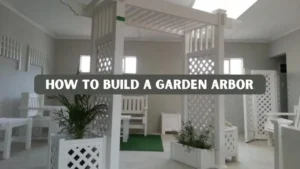Key Takeaways:
- Learn how to design and build a beautiful wooden oval coffee table from scratch.
- Step-by-step guidance on materials, tools, and techniques for a polished finish.
- Expert tips for durability, aesthetics, and safety during the woodworking process.
- Insights from real-world case studies to enhance your project planning and execution.
Why Build a Wooden Oval Coffee Table
A wooden oval coffee table adds elegance and warmth to any living space. Unlike standard rectangular tables, the oval shape creates a softer, flowing aesthetic that complements both modern and traditional interiors. For DIY woodworking enthusiasts, a wooden oval table project provides an opportunity to enhance skill, creativity, and personal style.
Creating your own table allows you to customize dimensions, wood type, and finish according to your room’s décor. This guide covers every stage of the process, from selecting wood to finishing touches, ensuring that your table is functional, visually appealing, and built to last. Whether it is for personal use or as a thoughtful gift, this project combines practical value with artistic appeal.
Planning Your Oval Coffee Table
Proper planning is essential for a successful woodworking project. Careful attention to dimensions, materials, and design choices will make construction smoother and yield a professional-looking result.
Dimensions and Design Considerations
- Standard Dimensions: Most coffee tables measure 16–18 inches high, 40–48 inches long, and 20–30 inches wide. Adjust according to your seating arrangement and room size to ensure comfortable reach and proportion with surrounding furniture.
- Shape & Style: Oval tables soften a room’s layout, reducing sharp lines in open spaces. The shape also creates a more inviting flow for foot traffic and social interaction.
- Leg Design: Options include straight, tapered, or pedestal legs. Choose a style that complements your décor while maintaining stability and supporting the tabletop’s weight effectively.
- Functionality: Think about storage options such as lower shelves or drawers if needed. Additional storage enhances practicality without sacrificing style or aesthetic appeal.
Choosing the Right Wood
- Hardwoods: Oak, maple, and walnut are durable, resistant to wear, and ideal for long-lasting tables. They also provide a rich, elegant appearance that enhances any living space.
- Softwoods: Pine or fir are easier to cut and cost-effective, but may dent more easily. Softwoods are perfect for beginners or for tables that will have a lighter workload.
- Eco-Friendly Options: Reclaimed or salvaged wood provides character while promoting sustainability. Using reclaimed wood also allows you to create a unique design with natural imperfections that tell a story.
Tip: Inspect wood for knots, cracks, or warping. Consistent grain patterns improve both structural integrity and visual appeal.
Tools and Materials Needed
Having the correct tools ensures both safety and precision.
Materials:
- Hardwood or softwood planks for tabletop and legs: Choose based on durability, appearance, and ease of cutting; hardwoods are long-lasting, while softwoods are easier to shape.
- Wood glue for secure joints: Ensures strong bonding between components and adds stability to the structure.
- Screws or dowels for assembly: Provides mechanical strength to support the table’s weight and maintain durability.
- Sandpaper (grits from 80 to 220): Used to smooth rough edges, prepare surfaces for finishing, and achieve a professional look.
- Wood stain, paint, or varnish for finishing: Enhances wood grain, adds color, and protects the surface from wear, moisture, and scratches.
Tools:
- Jigsaw or bandsaw for cutting the oval shape: Ideal for following curves and creating smooth, accurate oval edges.
- Circular saw or table saw for straight cuts: Provides precise, clean cuts for aprons, legs, and other straight components.
- Clamps for gluing and assembly: Keep pieces firmly in place while the glue dries to ensure strong joints.
- Drill and screwdriver set: Essential for making pilot holes, driving screws, and assembling parts securely.
- Measuring tape, square, and compass: Critical for accurate measurements, layout, and marking curves.
- Sander or sanding block for smooth finishes: Ensures a polished, even surface before applying stain or varnish.
Safety Tip: Always wear eye protection, ear protection, and a dust mask during cutting and sanding.
Step by Step Process
1: Cutting the Oval Tabletop
- Create an oval template using cardboard, plywood, or a string compass. This ensures your tabletop has a consistent and symmetrical shape.
- Trace the template onto your wood plank. Careful tracing minimizes mistakes when cutting and maintains the design’s proportions.
- Use a jigsaw to cut along the outline, moving slowly for accuracy. Taking your time prevents splintering and keeps the edges smooth.
- Smooth all edges with sandpaper or a router to achieve clean, rounded lines. Well-sanded edges improve both safety and the overall finished appearance.
2: Building the Base
- Cut legs to the desired height with precise measurements. Accurate cuts ensure the table sits level and prevents wobbling once assembled.
- Connect legs using side aprons or a pedestal frame for stability. Properly attached aprons distribute weight evenly and strengthen the overall structure.
- Ensure all joints are square and reinforce with wood glue and screws. This combination of adhesive and fasteners creates durable, long-lasting connections.
3: Assembling the Table
- Position the tabletop upside down on a stable surface. Ensure the surface is flat and protected with a soft cloth or foam to prevent scratches.
- Attach the base using screws or dowels while keeping everything level. Double-check alignment and levelness before tightening completely to ensure stability.
- Clamp the assembly and allow glue to fully cure for at least 24 hours. Proper clamping pressure helps create strong joints and prevents shifting during drying.
4: Sanding and Finishing
- Begin with coarse sandpaper (80–120 grit) to remove rough edges. This initial sanding prepares the surface for a smoother finish and ensures even absorption of stain or varnish.
- Progressively use finer grits (up to 220) for a smooth surface. Finer sanding reduces scratches and creates a polished, professional look on the tabletop.
- Apply stain evenly to enhance the natural grain of the wood. Using a cloth or brush in long, consistent strokes prevents blotches and achieves uniform color.
- Seal with polyurethane or varnish to protect against scratches and spills. Multiple light coats allow better penetration and durability while avoiding drips or uneven texture.
Tip: Multiple light coats of finish create a more even and long-lasting protective layer than a single heavy coat.
Expert Tips for Durability and Aesthetics
- Always pre-drill screw holes to prevent splitting the wood. This also ensures screws go in straight and hold the joints more securely.
- Use corner blocks or braces to increase structural stability. Properly placed braces can significantly extend the table’s lifespan and reduce wobbling.
- Test finishes on a scrap piece of wood to avoid color mismatches. Doing this helps you visualize the final look and make adjustments before applying it to the actual table.
- Keep your table away from direct sunlight and moisture to prevent warping. Additionally, using coasters and mats can protect the surface from spills and heat damage.
- Regularly maintain the table by wiping with a damp cloth and applying furniture wax or polish. This routine care preserves the wood’s natural shine and keeps it looking new longer.
Case Studies: Real-World Examples
- A woodworking enthusiast built an oak wooden oval coffee table using just a jigsaw and clamps. Within a weekend, the table was assembled and finished, demonstrating that even minimal tools can yield professional results when planning is done carefully.
- Another hobbyist combined a walnut tabletop with maple legs. After sanding and applying three coats of clear varnish, the table remained scratch-resistant and retained its rich shine for several years, highlighting the importance of high-quality finishes and attention to detail.
Conclusion
Building a wooden oval coffee table is a fulfilling DIY project that enhances woodworking skills while creating a functional and elegant centerpiece for your living space. By carefully planning dimensions, choosing high-quality materials, and following step-by-step instructions, you can craft a table that combines durability, beauty, and practical use.
Start by gathering tools and selecting the wood that best matches your space. Share your finished project with friends or online communities to inspire others and celebrate your craftsmanship.
FAQs
How long does it take to build a wooden oval table?
Depending on skill level and finishing choices, it may take 1–3 days including drying time for glue and finish.
Can I use reclaimed wood for this project?
Yes. Reclaimed wood adds character and sustainability but may require extra sanding or flattening.
What is the best finish for a coffee table?
Polyurethane is highly durable for daily use. Wax provides a soft sheen, and stain enhances the natural wood grain.
Can the table be adjustable in height?
Yes. Using threaded leg inserts or adjustable furniture legs allows for customized height adjustments.
Is this project suitable for beginners?
With proper planning, patience, and careful execution, even beginners can successfully complete a wooden oval coffee table.




